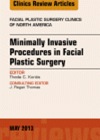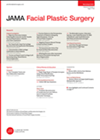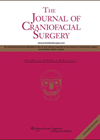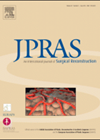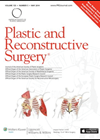
Journal Reviews archive for 2013
Endoscopic brow lift in the course of time
The authors present a systematic review on the advantages and disadvantages of various brow-lifting techniques. They present their decision algorithm for closed versus opened approach, including potential complications and their management in general. After a detailed description of the endoscopic...
Fat grafting within the focus of facial ageing
Volume restoration has become a cornerstone in the current model of understanding and approaching the aging face. Sam Lam offers a review in order to place fat grafting in its proper place, with all of its attendant risks, benefits and...
Complications and long-term patient satisfaction after endoscopic brow lift
The authors present the results of a study of recovery, complications and overall satisfaction of patients with endoscopic brow lift with or without concurrent rhytidectomy made by a single surgeon. The study was performed through a telephonic interview using a...
Management of alar retraction
This paper shows the results of a retrospective study on aetiology and treatment of one of the most common issues in rhinoplasty, alar retraction as defined by Jack Gunter’s classification system. The study was made using pre- and postoperative photographs...
Autologous fat grafting for lip reconstruction
The authors present the findings of a retrospective study of 12 patients undergoing autologous fat grafting for the reconstruction of a lip deformity following haemangioma treatment. At the age of about four to five months to two years of age,...
Quality of life in patients with titanium implant retained auricular prostheses
This is a retrospective study of 10 patients with titanium implant retained auricular prostheses. Quality of life was evaluated using three questionnaires: the Glasgow Benefit Inventory (GBI), the Rosenberg Self-Esteem scale, and the standard Medical Outcome Study Short-Form 12. Peri-implant...
Classification of contour deformities after massive weight loss, using the Pittsburgh Rating Scale
While the treatment of patients by skin reduction following massive weight loss is increasing, the conclusions of this study from the Netherlands finds that the Pittsburgh Rating Scale is not entirely suitable for this classification purpose and another system must...
A review of treatment options for acute flexor tendon injuries in zone one
This review reports the techniques that have been and are still used to repair acute injuries in this difficult area. The review does not end with a ‘best buy’ in the tradition of a consumer magazine, concluding that there is...
Platysma muscle use for oral sphincter substitution or countering excessive pull of a free muscle, following facial palsy
The use of the platysma muscle as a pedicled ‘apron’ flap in order to minimise the overactivity of a free muscle transfer, used in the treatment of facial palsy, is described in admirable detail. The successful results are carefully assessed...
The Accordion Severity Grading System in the assessment of negative outcomes following carpal tunnel release
Classification systems come and go, some more memorable than others. Without such systems it is not possible to compare like with like and so it must be conceded that they are necessary, although I personally find them difficult to commit...
Columellar strut in rhinoplasty
Several techniques are described to improve nasal tip shape; most of them include suture techniques or invisible grafts. In this article the author wants to put emphasis in the role of the columellar strut graft as a method to correct...
Psychosocial dysfunction during nasal reconstruction
Reconstructive surgery following skin cancer malignancy creates important levels of psychosocial distress, especially if it is located in an important aesthetic zone of the face like the nose. The authors present their findings of a prospective study group of patients...

